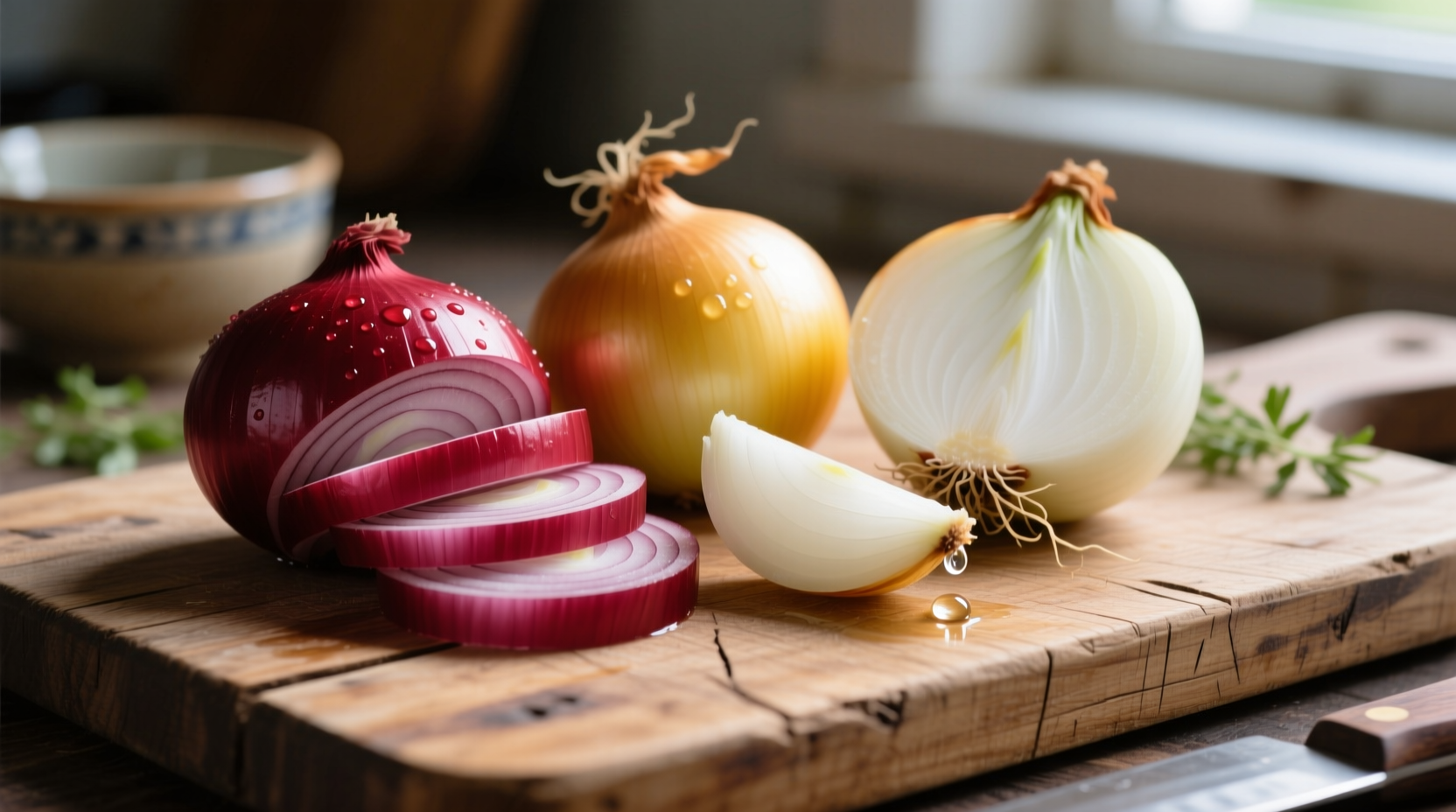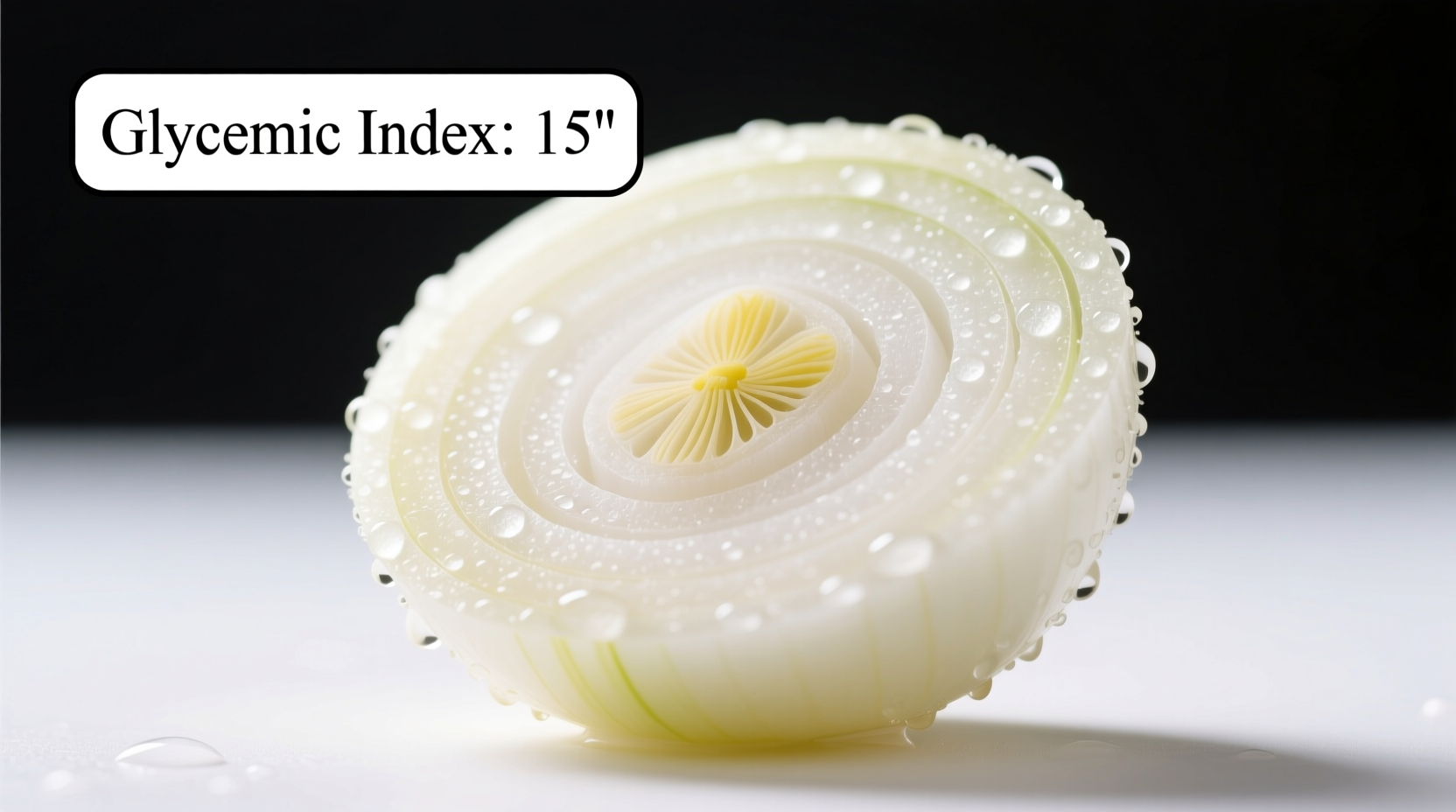Understanding Onion Glycemic Index: A Complete Guide for Blood Sugar Management
When managing blood sugar levels, knowing which foods won't cause spikes is crucial. Onions stand out as one of the most diabetes-friendly vegetables available, with a remarkably low glycemic index that makes them suitable even for strict blood sugar control diets.
Why Onion Glycemic Index Matters for Your Health
Unlike many other vegetables, onions contain minimal carbohydrates that convert to sugar during digestion. A medium-sized onion (about 110g) contains only 9 grams of total carbohydrates, with 2 grams of fiber that further reduces the net carbs affecting your blood sugar. This combination results in an extremely low glycemic load of just 1-2, meaning even larger portions won't significantly impact glucose levels.
Comparing Onion Varieties: Do Types Affect Glycemic Index?
Many people wonder if different onion varieties have varying effects on blood sugar. Research shows minimal differences across types:
| Onion Type | Glycemic Index | Carbs per 100g | Fiber Content |
|---|---|---|---|
| Yellow Onions (raw) | 10-15 | 9g | 1.7g |
| Red Onions (raw) | 10-15 | 8.9g | 1.8g |
| White Onions (raw) | 10-15 | 8.8g | 1.7g |
| Green Onions (scallions) | 15 | 7.3g | 2.6g |
| Caramelized Onions | 20-25 | 12g | 1.5g |
This USDA FoodData Central comparison confirms that all onion varieties maintain an exceptionally low glycemic profile. The slight increase in caramelized onions comes from concentration of natural sugars during cooking, but even this preparation method keeps onions in the low-GI category.
How Onions Actually Help Blood Sugar Control
Research published in the Journal of Nutrition and Metabolism reveals onions contain compounds that may actively improve blood sugar regulation. Quercetin and sulfur compounds found in onions have demonstrated potential to:
- Enhance insulin production in pancreatic cells
- Reduce insulin resistance
- Slow carbohydrate digestion
- Decrease liver glucose production

Practical Applications: Using Onions in Your Blood Sugar-Friendly Diet
Unlike many low-GI foods that lack flavor, onions offer tremendous culinary versatility while supporting healthy blood sugar levels. Here's how to maximize their benefits:
Raw Onion Applications
Raw onions provide the lowest glycemic impact while preserving maximum beneficial compounds. Try these approaches:
- Add thinly sliced red onions to salads for a flavor boost without blood sugar concerns
- Create quick pickled onions using vinegar (which may further reduce glycemic impact)
- Use as a garnish for soups, stews, and grilled proteins
Cooked Onion Strategies
When cooking onions, these techniques maintain their blood sugar-friendly properties:
- Light sautéing preserves most benefits while enhancing flavor
- Avoid prolonged caramelization which concentrates sugars
- Combine with other low-GI vegetables like broccoli or zucchini
Contextual Considerations: When Onion Impact Might Vary
While onions consistently maintain a low glycemic index, certain factors can influence their blood sugar impact:
- Individual metabolic differences: People with severe insulin resistance may notice slightly different responses
- Preparation methods: Caramelizing concentrates natural sugars, raising GI to 20-25 (still low)
- Portion sizes: Extremely large portions (more than 2 cups) could have measurable impact
- Combination with other foods: Pairing with high-GI foods affects overall meal impact
The American Diabetes Association confirms that onions remain among the safest vegetables for diabetes management regardless of preparation method.
Onions vs. Other Common Vegetables: The Glycemic Comparison
Understanding where onions stand compared to other vegetables helps put their low GI in perspective:
- Onions: GI 10-15 (lowest among common vegetables)
- Broccoli: GI 15
- Carrots (raw): GI 35
- Beets: GI 64
- Peas: GI 51
- Corn: GI 55
This comparison, verified through Harvard T.H. Chan School of Public Health research, shows onions rank among the absolute lowest glycemic vegetables available.
Scientific Evolution: Research on Onions and Blood Sugar
The understanding of onions' impact on blood sugar has evolved significantly over the past two decades:
- Early 2000s: Initial studies noted onions' low carbohydrate content but limited research on active compounds
- 2010-2015: Research identified quercetin and organosulfur compounds as key blood sugar regulators
- 2016-2020: Clinical trials demonstrated measurable improvements in fasting blood glucose with regular onion consumption
- 2021-Present: Focus shifted to understanding optimal preparation methods to preserve beneficial compounds
Current consensus among nutrition researchers, as documented in the World Journal of Diabetes, confirms onions' exceptional suitability for blood sugar management diets.
Expert Recommendations for Diabetes Management
Nutrition professionals consistently recommend onions as a staple for blood sugar control. The American Diabetes Association specifically includes onions in their "Non-Starchy Vegetables" category, encouraging unlimited consumption as part of a diabetes-friendly diet.
Registered dietitians specializing in diabetes management suggest:
- Incorporating at least ½ cup of onions daily for blood sugar benefits
- Using onions as flavor enhancers to reduce need for higher-calorie seasonings
- Combining onions with lean proteins to create balanced, blood sugar-stable meals
Practical Meal Planning with Onions
Here are three blood sugar-friendly meal ideas featuring onions:
- Morning Power Omelet: Whisk 2 eggs with ¼ cup diced onions, spinach, and mushrooms. Cook in olive oil for a breakfast with minimal blood sugar impact.
- Lunchtime Salad Boost: Add ½ cup sliced red onions to mixed greens with grilled chicken, avocado, and vinaigrette for sustained energy.
- Dinner Flavor Foundation: Sauté onions as base for vegetable stir-fry with tofu, using minimal oil and finishing with vinegar.
Addressing Common Misconceptions
Several myths persist about onions and blood sugar:
- Myth: Sweet onions have higher GI than regular onions
Fact: Varietal sweetness doesn't significantly impact glycemic index - Myth: Cooking destroys all blood sugar benefits
Fact: While raw preserves maximum compounds, even cooked onions maintain low GI - Myth: Onions raise blood sugar because they're sweet
Fact: Natural sugars in onions are minimal and offset by beneficial compounds
Conclusion: Onions as a Blood Sugar Management Ally
With their exceptionally low glycemic index of 10-15, onions represent one of the most diabetes-friendly vegetables available. Their unique combination of minimal carbohydrate content and active compounds that may improve insulin function makes them invaluable for blood sugar management. Whether raw, lightly cooked, or incorporated into meals, onions provide significant flavor with negligible blood sugar impact, making them a smart choice for anyone monitoring glucose levels.











 浙公网安备
33010002000092号
浙公网安备
33010002000092号 浙B2-20120091-4
浙B2-20120091-4